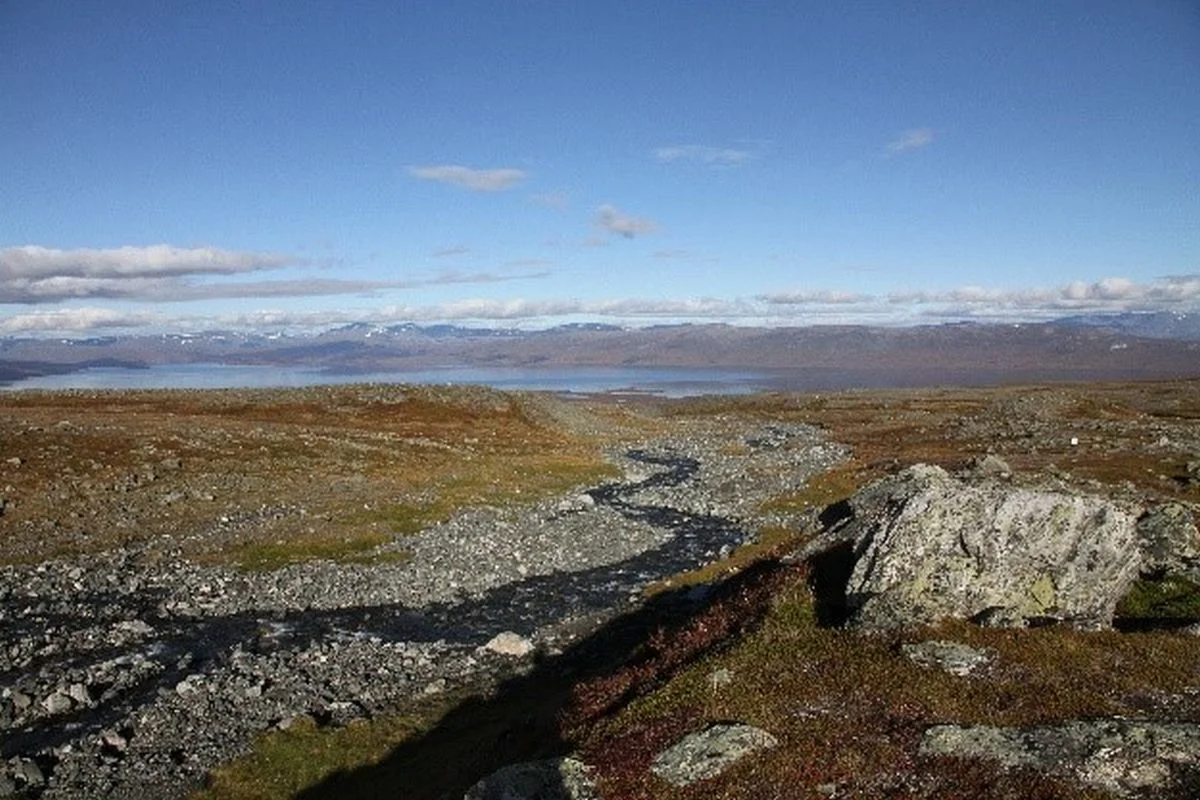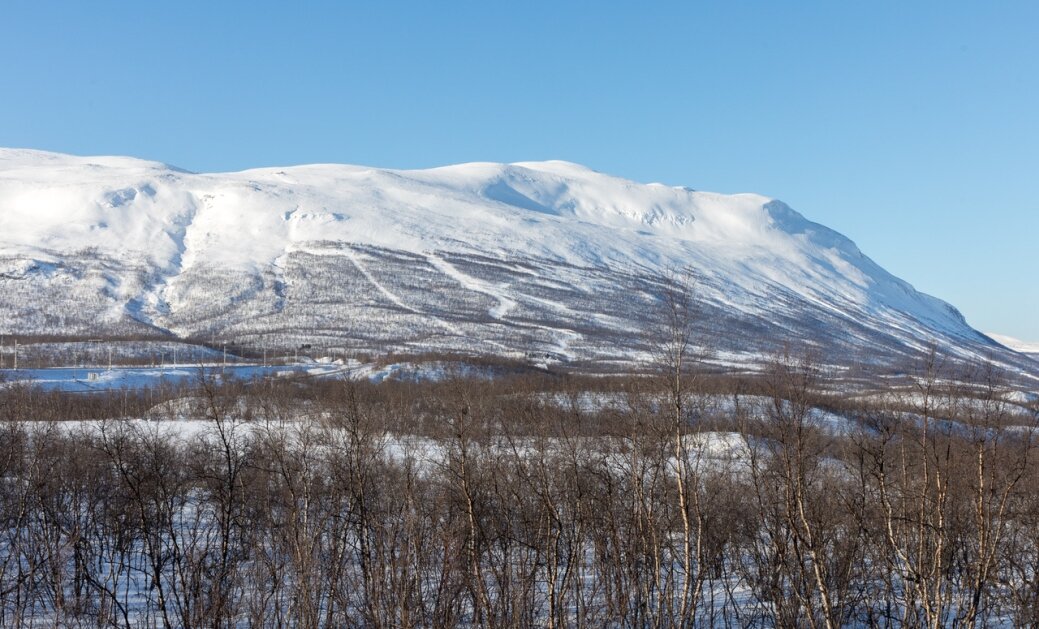The aim of this project is to disentangle the effects of climate warming and land use over the last century on Arctic vegetation.
Plant responses to 100 years of climate change in the Swedish Arctic
Plant responses to 100 years of climate change in the Swedish Arctic
Project Summary
An overwhelming number of studies have documented a wide range of plants and animals shifting their ranges and the timing of key events in their lives due to climate change. For example, migratory birds arrive earlier to their breeding grounds and flowering dates of plants occur earlier due to the increasing length of the growing season at higher latitudes. Here we also see treelines shifting and tall shrubs expanding, thus greening the landscape where fundamental changes create feedbacks to our climate system.
In Arctic and alpine regions, climate change occurs twice as fast as the global average. These changes are large, but how can we know/anticipate which species have the capacity to adjust to the observed rates of change, and if so, how? In light of the potential large-scale changes to species, communities and ecosystems, the costs and risks to the ecological services they provide humanity are enormous.
...Tracking changes in plant distributions and phenology is a key way to test ecosystem resistance to climate change. Phenology is nature’s calendar, defined as the recurring annual events, for plants, leaf and flower development, and fruit and seed production. Plants provide a range of ecosystem services, from agricultural products to forage for reindeer and timber, and play a vital role in the carbon cycle. Thus, detecting the fingerprints of climate change in plant communities is vital for society. For plants, there are four possible responses to climate change:
- Phenology: plants adjust the timing or duration of their phenology, for example, leaf-out or flowering, to match the climate conditions necessary for survival and reproduction
- Dispersal: species migrate or track the climate they are adapted to upslope or in latitude
- Dynamic: plants adjust both the timing of phenology and dispersal
- Decline: persistence with little or no reproduction or local extinction
Like all futuristic scenarios of planetary change, these responses are easy to conceive but impossible to test until they actually happen, after which it may be too late for us to respond – an agonizing dilemma that faces all societies at the cusp of great changes. H.G. Wells toyed with this dilemma in his book “The Time Machine” – what if we only knew what will happen?
In this study, we possess such a rare opportunity, a time machine of sorts, to actually witness and describe how plant species have responded to change – focusing on the four above responses – in some of the world’s most sensitive systems where change is predicted to be greatest – the Arctic and alpine region of Sweden. Here, we have detailed data on phenology and dispersal responses of 140 species along an elevational gradient straddling the Arctic-Boreal biomes and the forest-alpine ecotone. Our data begin in the early 1900s with a detailed three-year study of plant phenology and a weather station that has monitored environmental variables continuously since its establishment in 1913. Remarkably, 100 years later, we have the unique opportunity to resume this work in the exact same plots. Further, the phenology data is not restricted to single events, such as leaf-out or flowering, but covers the entire annual cycle of phenological events for all 140 species, making this a globally unique study.
Our results will reveal how plants have responded to significant climate changes in the far north of Sweden. Further, we will use the properties of the annual woody growth in trees and shrubs along our gradient to reconstruct their responses to climate change, calibrated to the local climate data, over the last century. We then ask how local conditions in topography, soils and microclimate can buffer plant species and communities from change. By combining, these methods we will not only study the responses for an entire Arctic and alpine plant community to a century of significant climate warming, but also assess the mechanisms, knock-on effects, and feedbacks.
Are these mountain landscapes resilient or does global warming overwhelm these systems, shifting patterns of diversity vital to functional ecosystems that provide services to northern communities? Our work has biological and societal significance, from policy makers to tourists, reindeer herders and a broad range of communities throughout the Swedish mountains where changes in ecosystems are likely to increase conflicts between stakeholders.
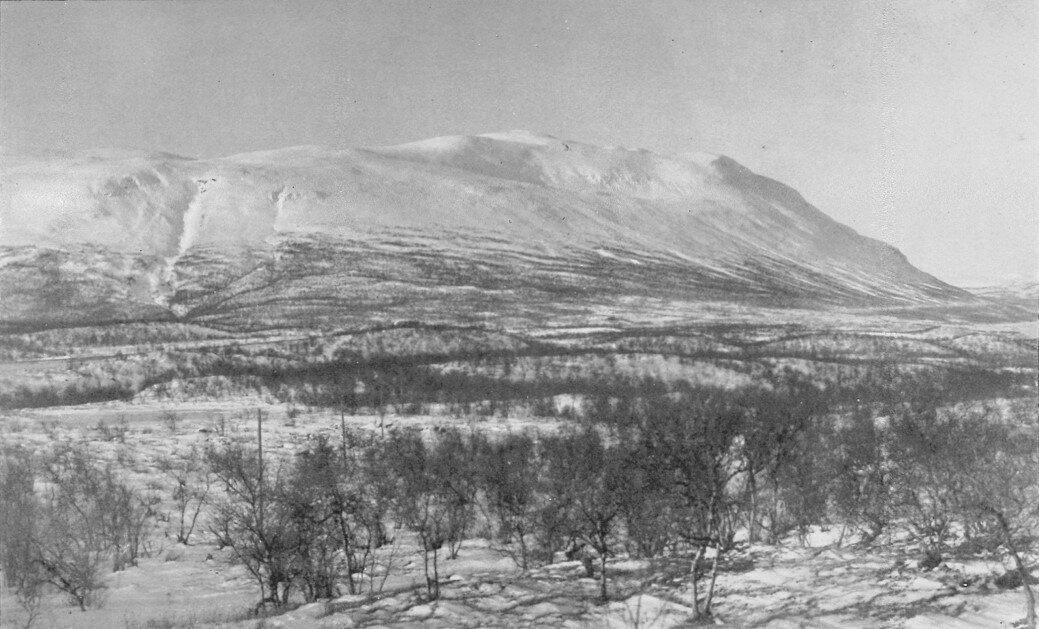
Figure. Nuolja taken from the Abisko Scientific Research Station. Top: taken on 21 February 2017 by Oliver Wright; Bottom: taken on 21 February 1925 by Carl G. Alm
Theses and Publications
Peer-reviewed Publications
MacDougall, A. S. et al. Comparison of the distribution and phenology of Arctic Mountain plants between the early 20th and 21st centuries. Global Change Biology 27, 5070–5083 (2021). https://onlinelibrary.wiley.com/doi/abs/10.1111/gcb.15767
Master’s Theses
Svedin, J. (2022) Individual Trait Matching of Bumblebees (Bombus) and flowers along an environmental gradient. [Umea University, Master’s Thesis]. Click here to download.
Al-Hayali, A. (2022) Do bumblebees partition an elevational gradient by body size? [Umea University, Master’s Thesis]. Click here to download.
Bachelor’s Theses
Schäfer, A. (2019) Changes in arctic plant communities along an altitudinal and temporal gradient in Northern Sweden. [University of Greifswald, Bachelor’s Thesis] Click here to download.
Raker, P. (2020) The influence of orography on species composition and phenology at mountain summits of Nuolja and Slåttatjåkka, Sweden. [University of Greifswald, Bachelor’s Thesis] Click here to download.
Big or small fish for harvesting? Effects of ontogenetic habitat shifts and bottlenecks in recruitment
Targeting managers of trout populations, the project will provide tools to predict how different brown trout populations respond to different levels of fishing mortality and different management interventions.
Can information preserved in old soils be used to predict future environmental change? Using ancient soil DNA to assess terrestrial ecosystem responses to environmental perturbations
This project aims to develop a new and more subtle proxy, soil ancient DNA, for paleo-ecological studies needed when understanding environmental change working beyond our contemporary monitoring programs.
The invisible carbon: an early indication of ecosystem change!
Streams are sensitive sentinels for environmental change by their integration of processes in terrestrial and aquatic systems. Upland headwater streams in the north Swedish tundra show seasonally exceptional high concentrations of uncolored dissolved organic carbon (DOC) and high carbon dioxide concentrations.
LOREX (The Limnology and Oceanography Research Exchange)
The Limnology and Oceanography Research Exchange (LOREX) is a formal training and professional development program in international research collaboration in the aquatic sciences offered by the Association for the Sciences of Limnology and Oceanography (ASLO).
ALTER - Abisko Long-Term Ecological Research
An important way in which plants affect carbon storage is by their interactions with symbiotic soil fungi – mycorrhiza –, as they have a great ability to store carbon belowground, although the way in which they do this depends on the plant species. Changes in vegetation composition therefore will also determine which types of fungi can be found in the landscape.
Fingerprints of change: Abisko plants and phenology
Our citizen science project focuses on the much-beloved signs of seasonal change – the emergence of leaves in the spring, the start of flowering, when berries are ripe for picking, and autumn leaf colours. Our project is inspired by the works of a few key botanists who helped put Abisko on the map 100 years ago, who established a transect from the summit of Mt Nuolja, which we use today.
Climate change induced regime shifts in Northern lake ecosystems
This project brings together new tools and concepts in biogeochemistry and ecology, with the aims of understanding and predicting the effects of climate change on the delivery of two major ecosystem services, fish production and the net greenhouse gas balance of Northern lakes.
Monitoring and management of Arctic lakes in a changing climate
The purpose of this study is to improve knowledge and monitoring of climate impacts on Arctic lakes. Specific aims include to quantify and provide threshold variables for climate change-induced regime shifts in fish resource use and production, and to develop tools and guidelines to be used in monitoring programs.
Climate impact on sources and sinks of greenhouse gases in high-latitude lakes
The core of the project is made up of (i) comparative studies of lakes across gradients in temperature and precipitation and (ii) large-scale experimental test of responses in C emission and burial to increases in temperature and precipitation/runoff.
Climate impact on the carbon emission and export from Siberian inland waters
This interdisciplinary project link expertise in aquatic biogeochemistry, hydrology and permafrost dynamics with the aim to improve the knowledge of the role of high latitude inland waters in emitting C to atmosphere and in exporting C to downstream coastal regions and how this varies between different climate regimes.
A cross-system analysis of ecological change in Kangerlussuaq (SW Greenland) and Torneträsk (Northern Sweden)
In this project, we will synthesize the available data from Torneträsk in Northern Sweden and Kangerlussuaq in south-west Greenland using novel statistical approaches to understand the key drivers of ecological changes at a range of timescales.
Taking the pulse of Swedish rivers: using metabolism to monitor ecosystem responses to environmental change
Taking the pulse of Swedish rivers: using metabolism to monitor ecosystem responses to environmental change
Project Summary
Streams and rivers carry out multiple ecosystem services that respond to and integrate natural and anthropogenic perturbations across landscapes. In northern regions, a critical aspect of this ‘integration’ involves the regulation of carbon (C) transfer from land to the atmosphere and sea. In this context, the degree to which streams and rivers transform terrestrial organic carbon (OC) and act as sources of CO2 to the atmosphere is subject to much current debate. National monitoring programs have the potential to shed light on this issue, yet these efforts rarely assess aquatic ecosystem processes. As a solution, we propose adding high frequency measurements of dissolved oxygen (DO) to current monitoring programs, which allow for the calculation of fundamental metabolic rates at daily time scales. Such measures reveal the ‘pulse’ of biological activity in running waters with the temporal resolution needed to capture changes in the degradation of terrestrial OC and CO2 production and fixation in response to diverse environmental changes. The goals of this research are to 1) determine how the rates and patterns of metabolism in Swedish rivers are shaped by regional climatic gradients and anthropogenic stressors, 2) Quantify the extent to which streams and rivers in arctic, boreal, and hemi-boreal zones degrade terrestrial OC, and contribute to CO2 evasion, and 3) Advance a simple and cost efficient method to assess metabolism that will complement current monitoring programs in Sweden by adding functional metrics
Collaborators
Jan Karlsson, Umeå University
Erin Hotchkiss, Virginia Polytechnic Institute
Hjalmar Laudon, Swedish University of Agricultural Sciences, Umeå
Funding
Formas
Groundwater discharge: a hidden driver of greenhouse gases (CO2 and CH4) emissions from lakes
This project will provide the first quantification of both spatial and temporal variations in permafrost groundwater discharge (PGD) and its importance for both the C cycle and the quality of surface waters.
Snow bunting migration and spring stop-over ecology in Abisko
Snow bunting migration and spring stop-over ecology in Abisko
Project Summary
Snow bunting (Plectrophenax nivalis or snösparv) have a circumpolar distribution, breeding mostly at Arctic latitudes or further south on alpine areas. Each year they migrate to lower latitudes to spend the winter, usually south of the snow line, though in human settlements they may stay further north where food is available. During winter, the Swedish breeding population is supplemented by snow bunting migrating from north Norway, Finland, Russia, Svalbard, and Greenland. The population of snow bunting breeding in Sweden has declined by 10-40% over the last 30 years, but is considered to have stabilised the last several years so is not currently considered threatened (Rödlistade arter i Sverige 2015, ArtDatabanken SLU). As the species breed at polar latitudes and alpine areas, and that they winter relatively far north, they are in areas experiencing some of the most rapid rates of climate change worldwide, with periods of snowcover reducing and timing of snowmelt becoming earlier, while temperature is rising (i..e approximately 1.5° C in the last 30 years in the Arctic). In this project we plan to both combine the collection of field data on migrating birds at a stopover site and breeding birds in northern Sweden (Abisko) with analysis of ring recovery data across Europe.
Collaborators
Tom Evans, CAnMOve, Lund University
Funders
Gustaf och Hanna Winblads
Project Photos
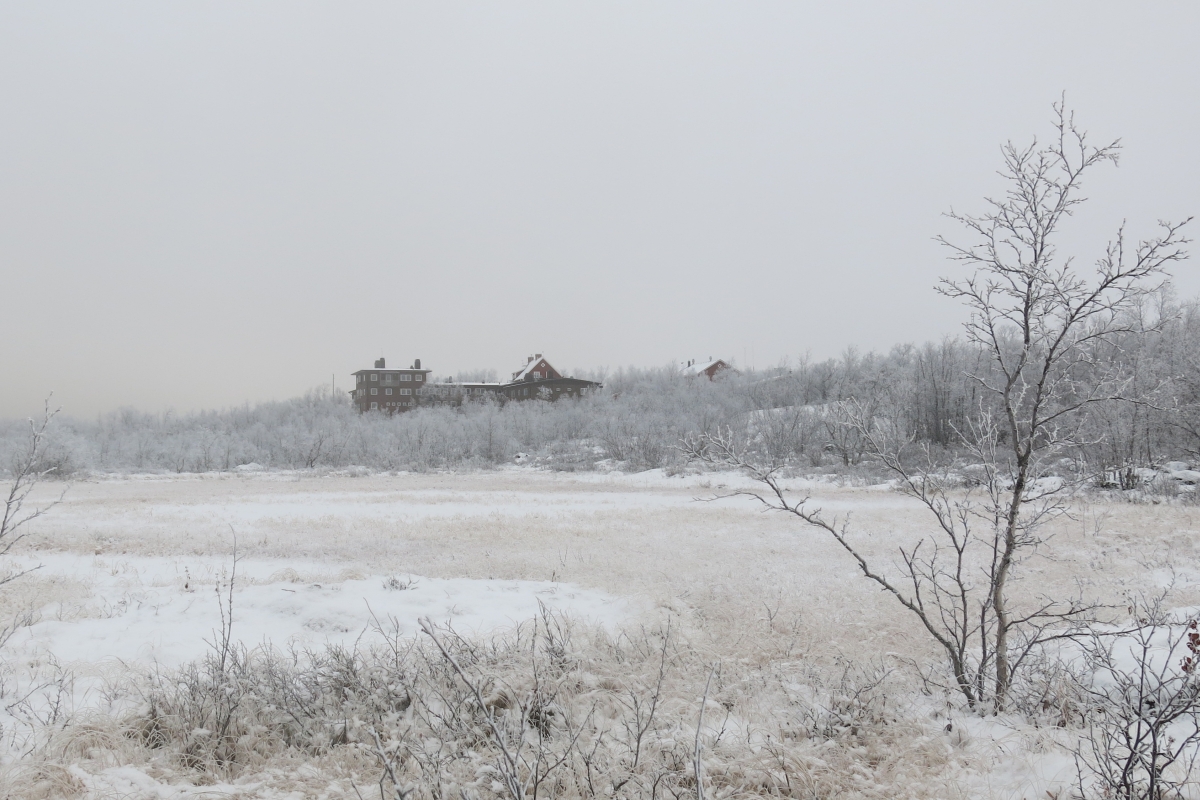


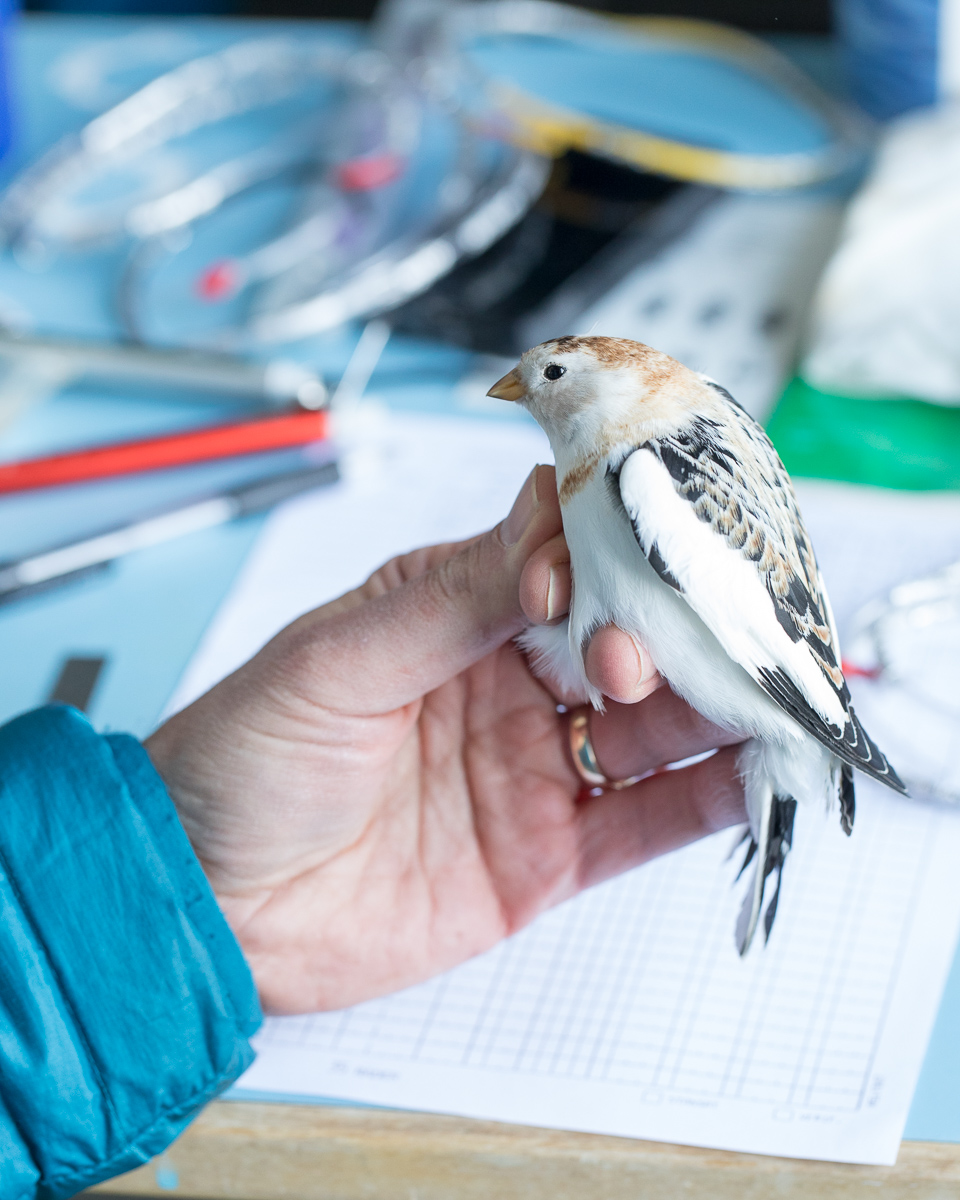
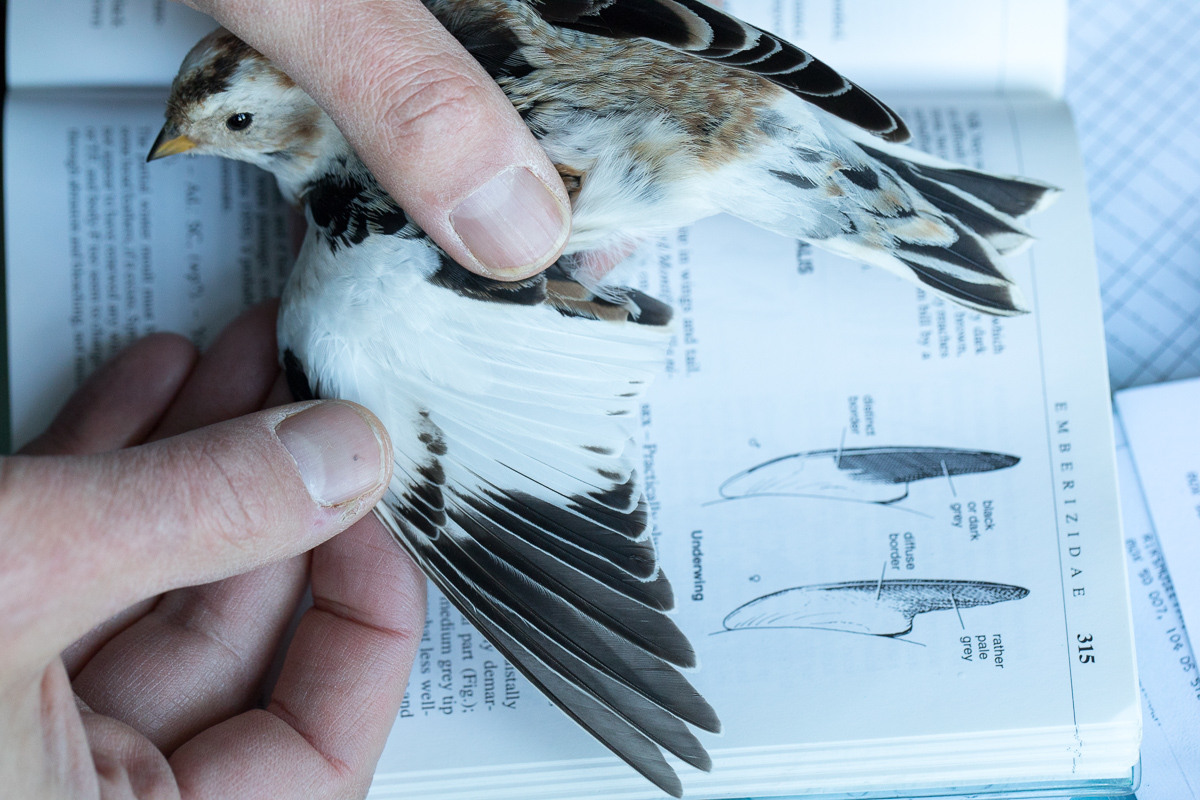
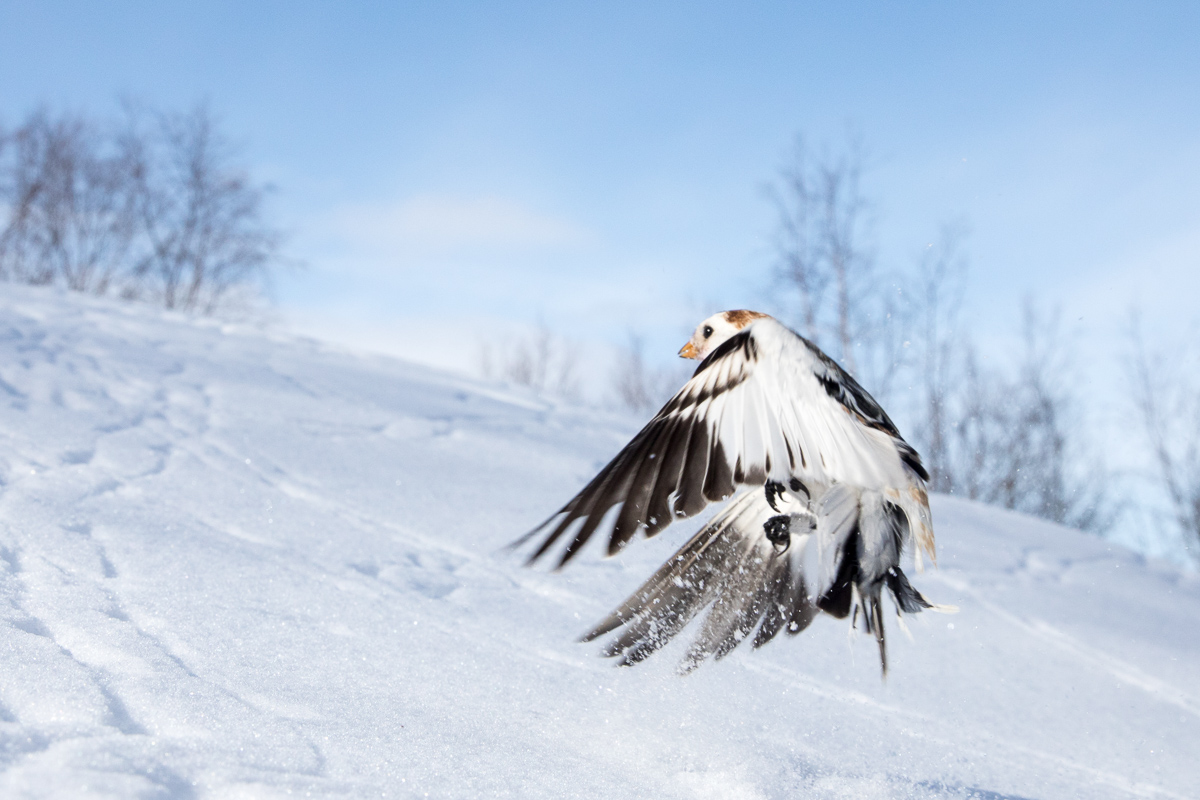
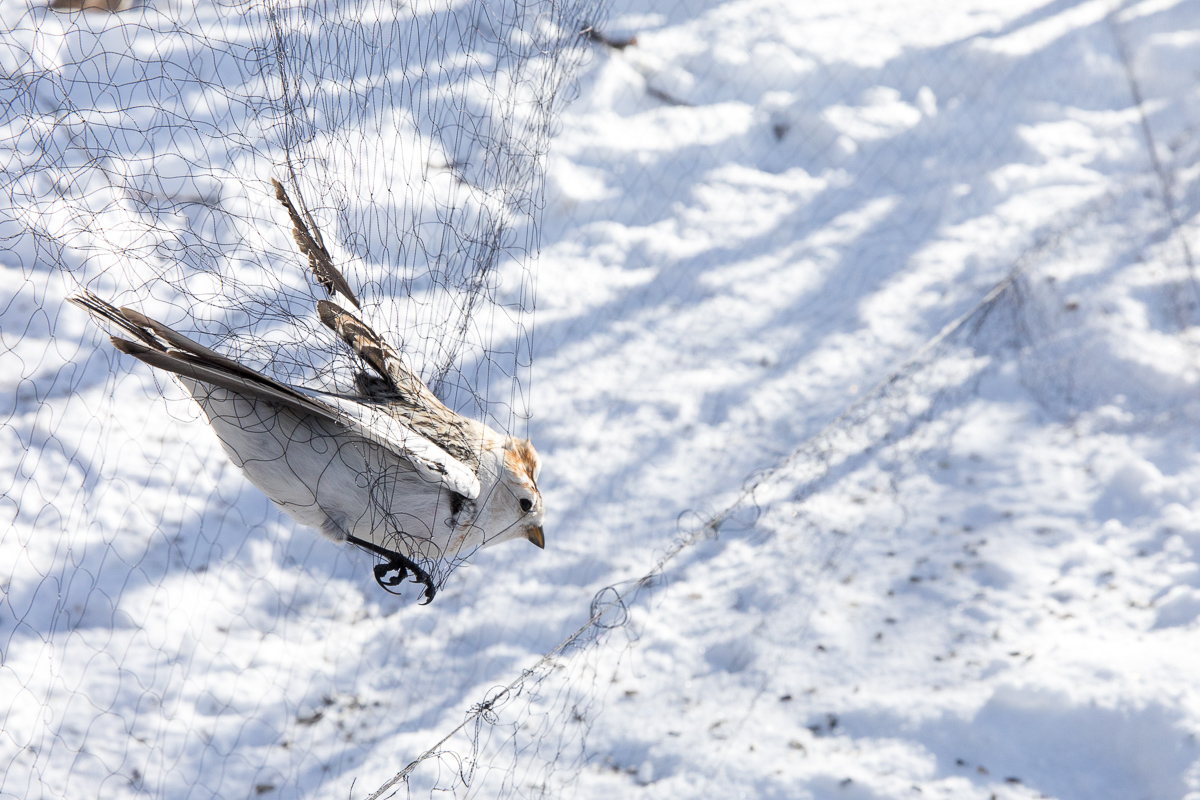
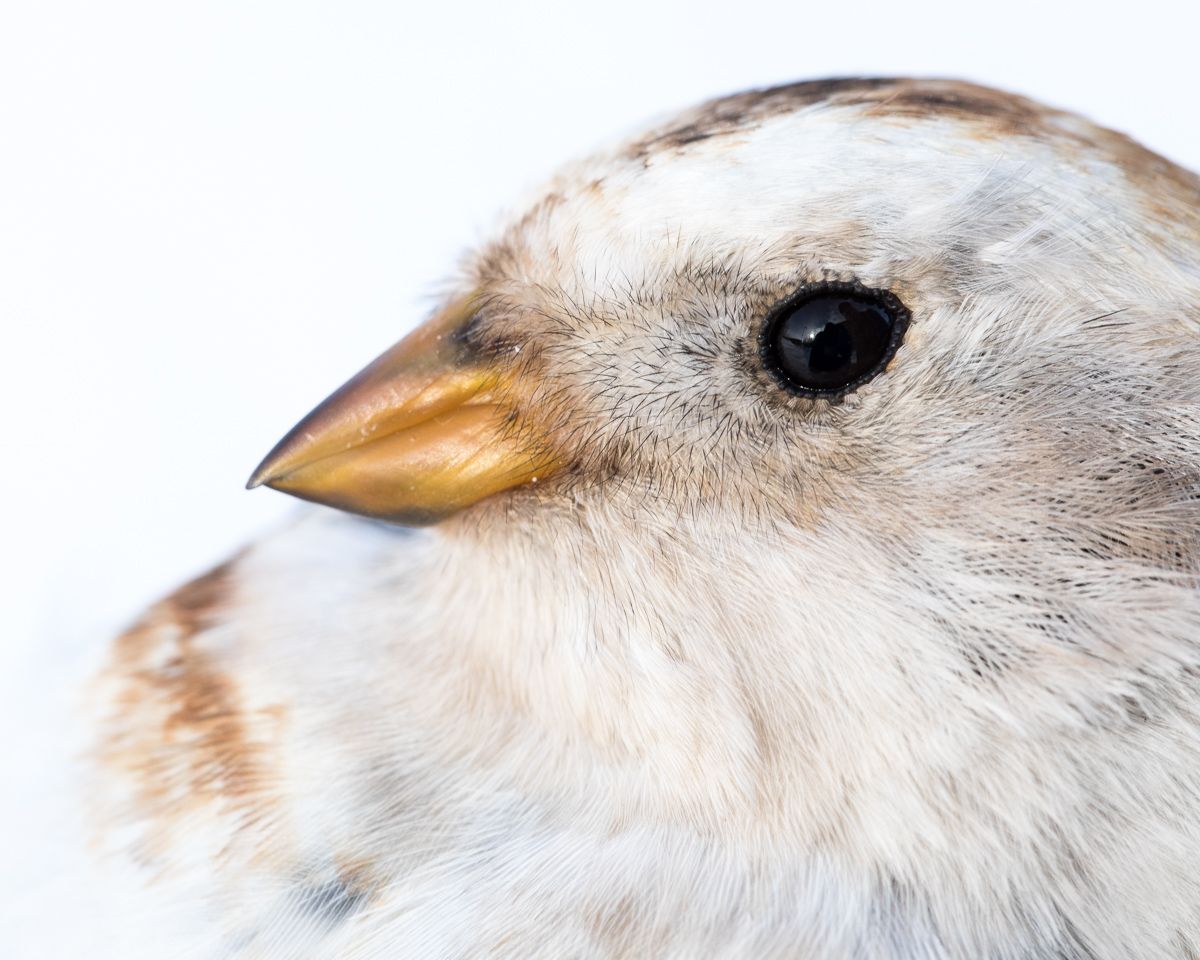
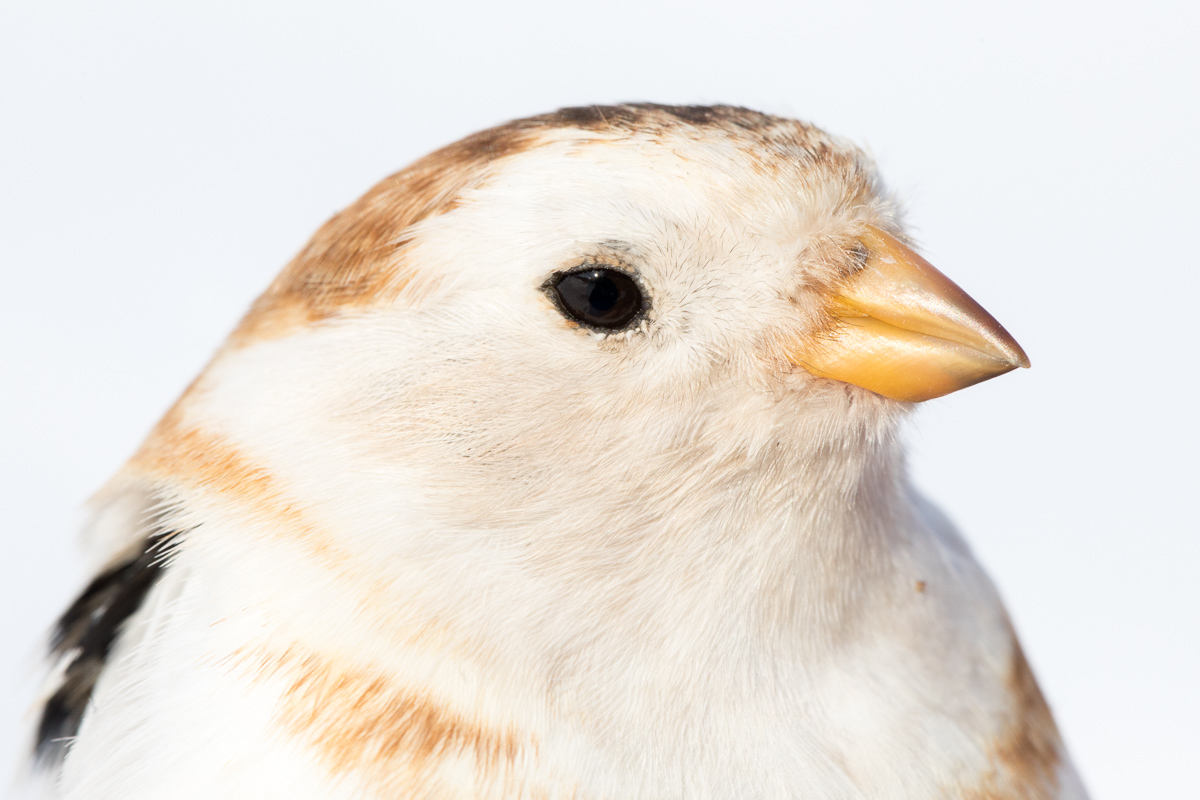

All photos of snow buntings taken and copyright of Oliver Wright.
Arenas for building relations for co-operation through citizen science
The purpose of this project is to develop capacity building for citizen science (CS) and strengthen cooperation in research and education at Swedish universities. The end products will be a resource for citizen science projects communicated on web portal and will continuously enable learning and knowledge exchange between the universities and the general public.
SITES Water
SITES WATER
SITES is a nationally co-ordinated infrastructure for terrestrial and limnological field research.
SITES extends throughout Sweden with different ecosystems and climatic zones, from agriculture lands, forest, cultivated forest to mires, streams, lakes and alpines.
SITES offers all scientists to use participating field research stations. Either you can be on site yourself or outsource an assignment to the technical staff at the station. You also have the opportunity to use existing data collected at the stations. There are, in a number of areas of research, extensive and long series of data. Read more about what SITES provides here.
Within SITES three new infrastructures has been initiated and is now under development: SITES Water, SITES AquaNet och SITES Spectral.
Project Description
SITES Water aims to build a long-term and well-coordinated measurement program
that will form the basis for the infrastructure where hydrological, physical, chemical and biological parameters in lakes and streams will be measured.
SITES Water builds a unique long-term measurement program where hydrological, physical, chemical, and biological parameters within lakes and streams are measured. Based on this ‘backbone’ infrastructure SITES Water will thus provide data and facilities to address a broad range of scientific questions relevant for the scientific community.
Seven of SITES nine stations participate. SITES Water is either initiated as a new facility at some stations or built upon already existing stream/lake networks at some other stations. SITES Water share and competence develop the team/crews across stations working with these structures and data to deliver a state-of-the-art measurement program.
SITES Water data
There are several types of data collected within SITES Water divided into six layers.
Each layer are described below and there specify well what type of data that are collected and distributed. All layers are divided into base and advance level where base level apply to all stations, and advance apply to some and are usually a result of already ongoing programs and built on previous knowledge at the station.
Site in abisko
Abisko scientific station is unique and versatile modern research station located app. 200 km north of the polar circle. The station has international standard and are used by a number of different research projects addressing high tech experiments in soil and water terrain. Abisko also provides measurement programs and observations for a number of different parameters. The surrounding environment is diverging both from a topographic perspective but also regarding climate gradients.
Researches in Abisko utilize the measurement programs and observational data series along with specific experiment and modelling to address questions mainly related to environment and climate change. Addressed time perspectives of these studies range from hundreds of millions of years back in time to different future scenarios.
Each year between 500 and 600 researchers from the whole world visit Abisko. The station provides lodging, guest kitchen, laboratories, offices, library, workshops, and lecture halls, meeting rooms, green house, “attempt gardens”, storage rooms and a meteorological station.
For access of observations and data from measurement programs in Abisko please contact the station manager, explore Abisko base program of parameters and sampling plots or visit Abisko-GIS (external homepage).
Abisko is part of SITES infrastructures SITES Water and SITES Spectral.
The homepage of Abisko can be found here.
Abisko researcher
Arctic citizen science: snow and plant phenology in a changing climate
Arctic citizen science: snow and plant phenology in a changing climate

Project Summary
As scientists a major challenge of our time is to understand and predict effects of climate change on ecosystems and the services they provide to humanity. A larger and possibly more important challenge is to increase the awareness of the importance of these processes and to get the vital to support of citizens, policy and decision makers for adaptation, mitigation and management schemes. Arctic regions are of special concern in future climate-warming scenarios, because the air temperature increase is predicted to be amplified towards the north where sensitive ecosystems experiences significant change and exert strong feedback effects on the global climate system.
The aim of the project is to reach out to the visitors of Abisko, involve them in a climate research project and use this interaction to communicate how we do climate research. Specifically, we will develop an existing study site into a citizen science trail, adjacent to the Abisko Scientific Research Station and the naturum Abisko in collaboration with the Swedish National Phenology Network and their nation-wide monitoring tool Naturens kalender. As the trail follows an elevational, and thereby a strong climatic gradient, it will offer a concrete illustration of climate effects on plants, snow and the possible effects climate change.
The existing study site was originally established between 1917 and 1919 by Swedish botanist Thore C. E. Fries as an elevational-transect comparing snowmelt dates with plant phenology. Starting in 2017 Climate Impacts Research Centre scientists will replicate Fries’ study to determine how the observed climate changes in the region have affected both snow cover and plant phenology. The new study will incorporate cutting-edge climate stations and phenology cameras to allow us to analyse our results using modern multivariate approaches.
To increase the impact of the new study we will implement a citizen science phenology project along the same trail. The citizen science phenology project will include a citizen science phenology mobile application developed in collaboration with existing Naturens kalender app as well as PicturePosts and PhenoCam projects to allow citizen scientists to contribute observations and phenology photos and get near-real time feedback through innovative mobile and web interactive applications. In addition to providing this novel way of directly interacting with and contributing to climate change research project in the Arctic as “citizen scientists”, we will communicate specific and general research results in relation to climate change effects in the Arctic. The project will utilize many unique aspects of the Abisko region, a hot spot for both tourism and world class research. The science trail targets both Swedish and international visitors and through the international phenology networks we can guide the visitors to participate in similar kinds of citizen science based phenology monitoring back home. An interdisciplinary working group of international scientists and stakeholders actively engaged in Arctic nature conservation and science will develop the project.
Collaborators
Magnus Augner, Abisko Scientific Research Station, Swedish Polar Research Secretariat
Håkan Grudd, Abisko Scientific Research Station, Swedish Polar Research Secretariat
Kjell Bolmgren, Naturens Kalender, Swedish University of Agricultural Sciences
Lo Fischer, naturum Abisko, County Administrative Board/ Länsstyrelsen Norrbottens län
Jan Karlsson, Umeå University
Funding
Climate Impacts Research Centre
FORMAS
Deep diversity: patterns, mechanisms and effects in below-ground vegetation
The objectives of this research program are to explore how below-ground vegetation contributes to patterns of species diversity, how below-ground mechanisms control diversity, and how the loss of diversity affects ecosystem services such as soil carbon sequestration.






